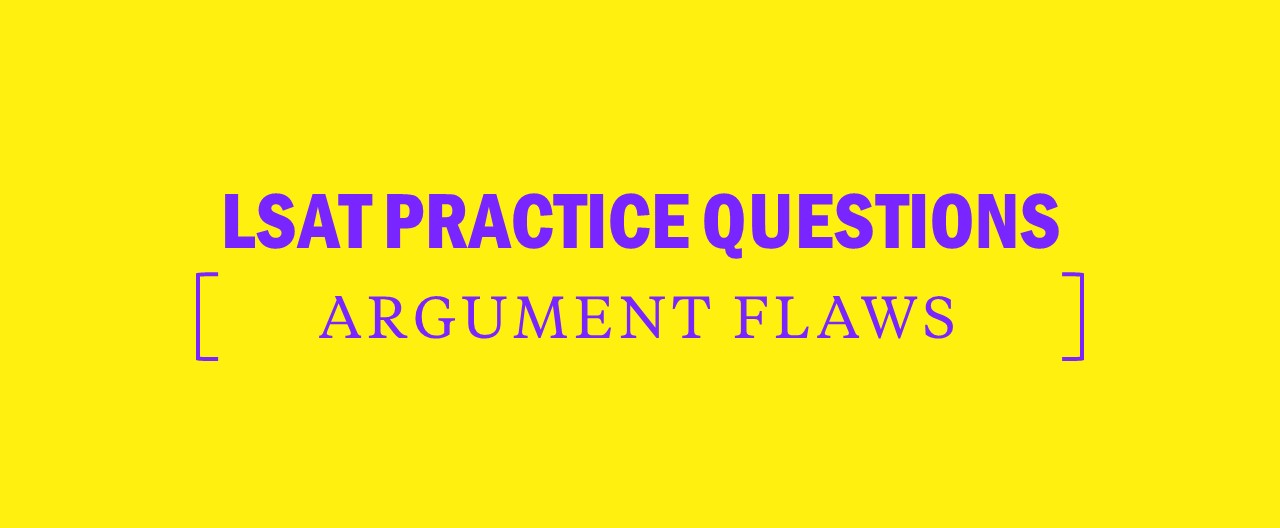LSAT Logical Reasoning Practice Questions: Argument Flaws
Let’s take a close look at three actual LSAT logical reasoning questions from LSAC PrepTest 19. Try each question on your own, and then check out the explanations from Kaplan’s test experts and see if your thought process matched ours. The questions are copyrighted property of the LSAC.
LSAT Practice Question 1
Three-year-old Sara and her playmate Micheal are both ill and have the same symptoms. Since they play together every afternoon, Sara probably has the same illness as Micheal does. Since Micheal definitely does not have a streptococcal infection, despite his having some symptoms of one, the illness that Sara has is definitely not streptococcal infection either.
The reasoning in the argument is flawed because the argument
(A) presupposes what it sets out to prove
(B) mistakes the cause of a particular phenomenon for the effect of that phenomenon
(C) fails to distinguish between acute streptococcal infections on the one hand, and less severe streptococcal infections on the other
(D) treats evidence that the conclusion is probably true as if that evidence establishes the certainty of the conclusion
(E) makes a general claim based on particular examples that do not adequately represent the respective groups that they are each inteded to represent
Answer and Explanation
The correct answer is D.
By checking the stem first, you know to look out for a logical flaw from the get-go, and perhaps you spotted it in the shift from “probably” in the evidence to “definitely” in the conclusion. Sara probably has the same illness as Michael, and he definitely doesn’t have a strep infection. Therefore, the author concludes, Sara definitely doesn’t have one either. Uh-uh. The most we can conclude from this evidence is that Sara probably doesn’t have a strep infection. As (D) points out, evidence supporting a probable conclusion is erroneously being used to support a definite one.
(A) is another way of accusing the author of employing “circular reasoning.” But the evidence and conclusion here are two different things; the argument doesn’t assume, or presuppose, what it sets out to prove. The mistake here lies in the faulty connection between the evidence and conclusion, not in the fact that the evidence and conclusion are identical.
(B) The only cause-and-effect relationship that can be inferred from this scenario is that playing together (the cause) is what leads to the likelihood that Sara has the same illness as Michael (the effect). Mistaking this cause for this effect would lead the author to the ridiculous conclusion that “possibly having the same illness as Michael causes Michael and Sara to play together every afternoon,” which of course the author doesn’t do.
(C) Acute vs. less severe strep infections? This is an irrelevant distinction if there ever was one. Sure the author fails to make this distinction, but why on earth would she be logically obligated to do so?
(E) Huh? If you spent the time to interpret this choice in full, you’d see that it’s referring to a non-representative sample, which is a logical flaw but not the one exhibited here. But (E) can be tossed based on its first four words, simply because there’s no general claim here; everything is specifically related to Sara and Michael.
LSAT Practice Question 2
The number of calories in a gram of refined cane sugar is the same as in an equal amount of fructose, the natural sugar found in fruits and vegtables. Therefore, a piece of candy made with a given amount of refined cane sugar is no higher in calories than a piece of fruit that contains an equal amount of fructose.
The reasoning in the argument is flawed because the argument
(A) fails to consider the possibility that fruit might contain noncaloric nutrients that candy does not contain
(B) presupposes that all candy is made with similar amounts of sugar
(C) confuses one kind of sugar with another
(D) presupposes what it sets out to establish, that fruit does not differ from sugar-based candy in the number of calories each contains
(E) overlooks the possibility that sugar might not be the only calorie-containing ingredient in candy or fruit
Answer and Explanation
The correct answer is E.
This one sounds like something a candy manufacturer might try to put over on us. We know there’s a flaw in here somewhere, and maybe your common sense knowledge of food and fruit helped you to spot it. The argument proceeds like so: Since the same amounts of refined cane sugar and fructose contain the same number of calories, candy made with refined cane sugar must contain no more calories than a piece of fruit containing the same amount of fructose.
But wait a minute…candy and fruit may have other calories above and beyond the amount contained in the sugar, right? If so, those extra calories could easily skew the author’s conclusion. To arrive at this conclusion, the author has to assume that there are no other sources of calories in candy and fruit—an assumption that ignores the possibility that other ingredients in these foods may have calories aplenty, as (E) describes.
(A) Noncaloric…hmm…NONcaloric?…
(B) The argument compares the amount of calories in candy with that in fruit, not the amount of sugar in different types of candy. Whether all candy contains a similar amount of sugar is irrelevant; the author neither considers nor presupposes it.
(C) There is no such confusion between sugars. Two types of sugar are presented in the argument, and nowhere does the author confuse one with the other.
(D) has two problems. First, the author doesn’t set out to establish that fruit and sugar-based candy have the same number of calories, as (D) suggests; he simply wants to show that such foods, containing the same amounts of sugar and fructose, have the same number of calories. That’s a big difference. But even if we indulge this subtle shift in the recounting of the author’s intention, we’d still have to kill (D) on the grounds that the author doesn’t presuppose this contention. Distinct evidence is presented, even though that evidence doesn’t fully lead to the conclusion. Just as in question 1 (A) (see above), the argument is flawed, but circular reasoning—an author presupposing what he or she sets out to prove or establish—isn’t it.
LSAT Practice Question 3
In order to increase production, ABC Company should implement a flextime schedule, which would allow individual employees some flexibility in deciding when to begin and end their workday. Studies have shown that working under flextime schedules is associated with increased employee morale.
The argument depends on the assumption that
(A) the employees who prefer a flextime schedule are most productive employees at ABC Company
(B) an increase in the morale of ABC Company’s employees could lead to increased production
(C) flextime schedules tend to be associated with reduced lateness and absenteeism
(D) employees are most productive during the part of the day when all employees are present
(E) companies that are in competition with ABC Company also use a flextime schedule
[ NEXT: LSAT Pop Quiz ]




